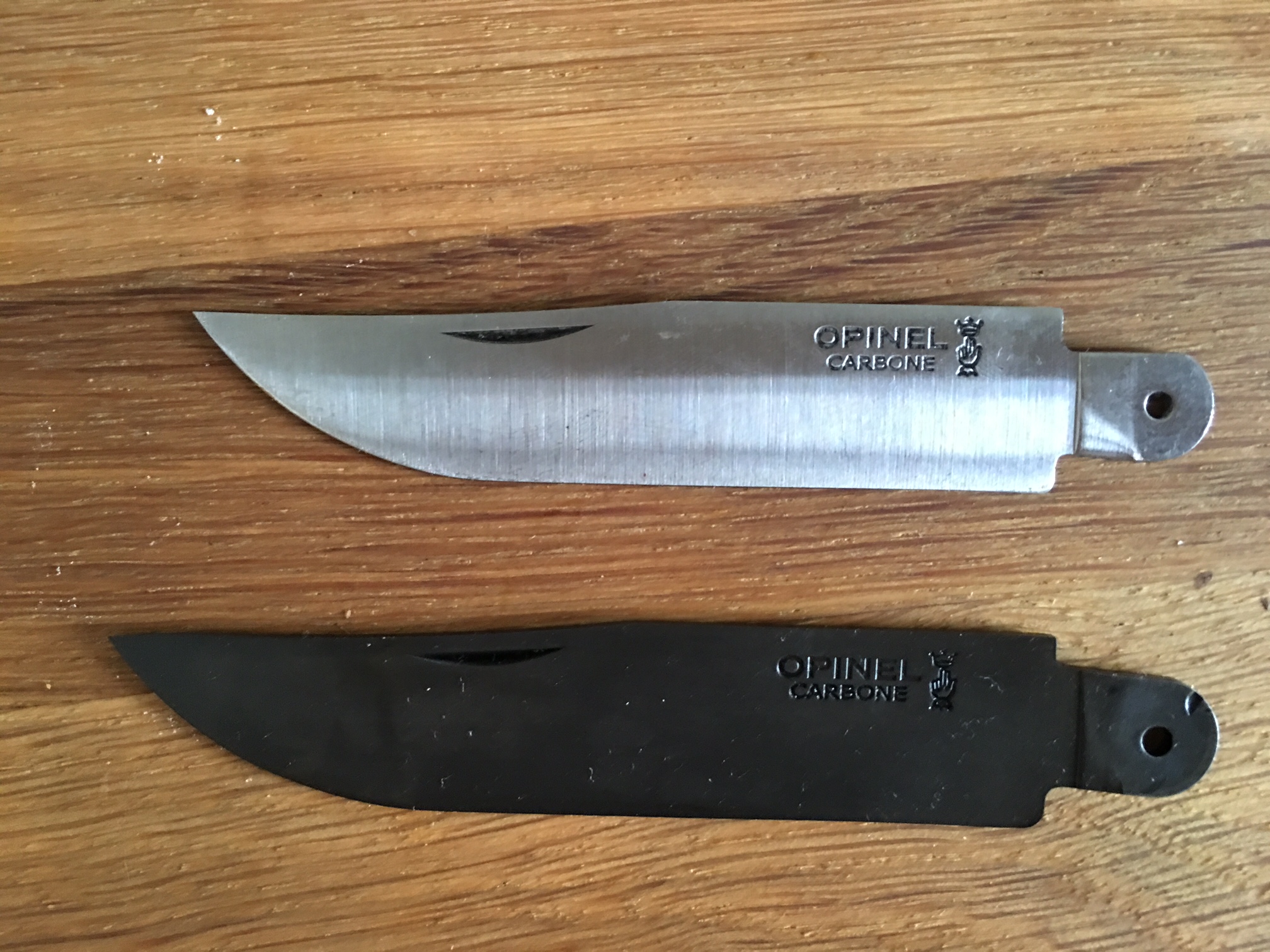If you're married, forcing a patina on my carbon steel steak knife is the most practical thing you can do.
A good meal with friends can last a few hours. Two hours after a meal with med rare steak, tomatoes, and other acidic foods, a new carbon steel steak knife doesn't look so hot. It's a spotted stained mess in fact. That makes the wife not like them "These look yard-sale junk. Why don't we just buy some nice Calphalon ones at Target?...". A very practical way to keep them from looking like a stained mess is to force the patina everywhere. Alternatively, I could buy insipid steak knives at Target made out of 420j, divorce my wife, or excuse myself every acidic course in the meal "hold that thought, please excuse me while I wash my knife again...". For me, the pragmatic choice is forced patina

Here is the before and after on a carbon steel Au Sabot paring knife that I forced a patina on. I use them as steak knives. The pic is of 3 different knives that I bought as potential steak knife candidates, the carbon steel one is at the bottom, it's stainless twin is right above it. Needless to say I went with the carbon.

And here is the pic after brushing it with boiling vinegar for 5 minutes. My method was to boil 1 cup of vinegar 10% vinegar in a 12 inch saucepan, then brush it on with a basting brush.

I decided to go whole hog and just blacken the damn thing. I did the brushed boiling vinegar trick for another 10 minutes or so. It got very dark, but nowhere near as dark as the Opinel shown in the prior post above.

To test the efficacy of the protective coating, I put a drop of regular yellow mustard and left it on the blade for 5 minutes. That had almost no effect. So I put it on for 10 minutes more. It had an effect, but strangely, when I wiped it off, it just resulted in a slightly
less tarnished ring of 0.5mm around the perimeter of the mustard drop. You can't really see it with the naked eye unless you tilt the blade just right in the light. It disappeared after a few weeks of use.
After 5 months of constant use, they still look exactly like they did after I took them out of the boiling vinegar. So many guests have complimented us on them because they look like very cool antique knives, that my wife has finally started to think that maybe carbon steel has a place at the table.















